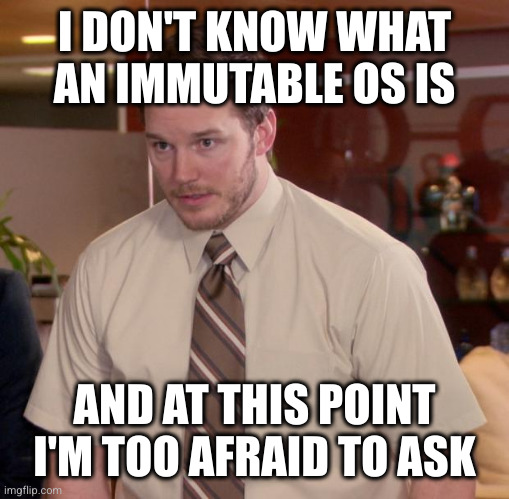this post was submitted on 24 Jul 2024
513 points (97.8% liked)
linuxmemes
20761 readers
1465 users here now
I use Arch btw
Sister communities:
- LemmyMemes: Memes
- LemmyShitpost: Anything and everything goes.
- RISA: Star Trek memes and shitposts
Community rules
- Follow the site-wide rules and code of conduct
- Be civil
- Post Linux-related content
- No recent reposts
Please report posts and comments that break these rules!
founded 1 year ago
MODERATORS
you are viewing a single comment's thread
view the rest of the comments
view the rest of the comments

An immutable OS is fixed and mounted non-writable. Every update you get, every program you install is handled on top of it via containers or filesystem overlays so the underlying OS is untouched. Basically the same concept you know from smartphones or other devices with a "reset to factory settings" function. No matter how hard you screw up your system, you can always reset to the base OS, either by granulary deactivating things installed on top, or by a reset to the working base OS.
So how are OS updates handled, they are not written into the main OS?
They are written but don't replace something in the read-only OS. They are just overlayed, so once removed the original is still there. How they do it differs. There are actual overlay filesystems for the job, or some use btrfs where all subvolumes behave mostly like virtual partitions (and copies of a subvolume only take space for changes of the original).